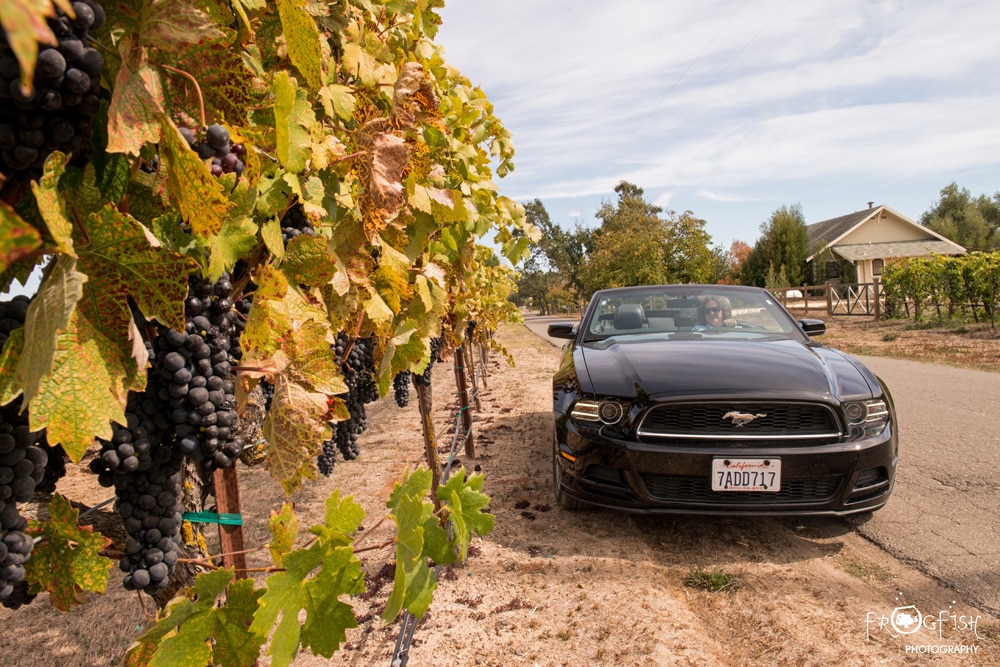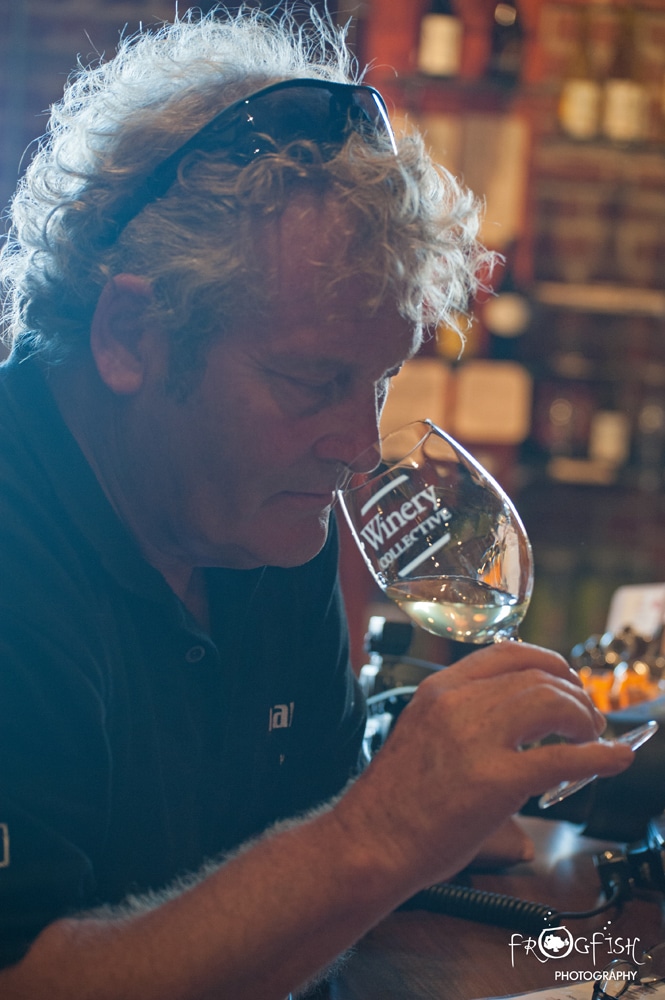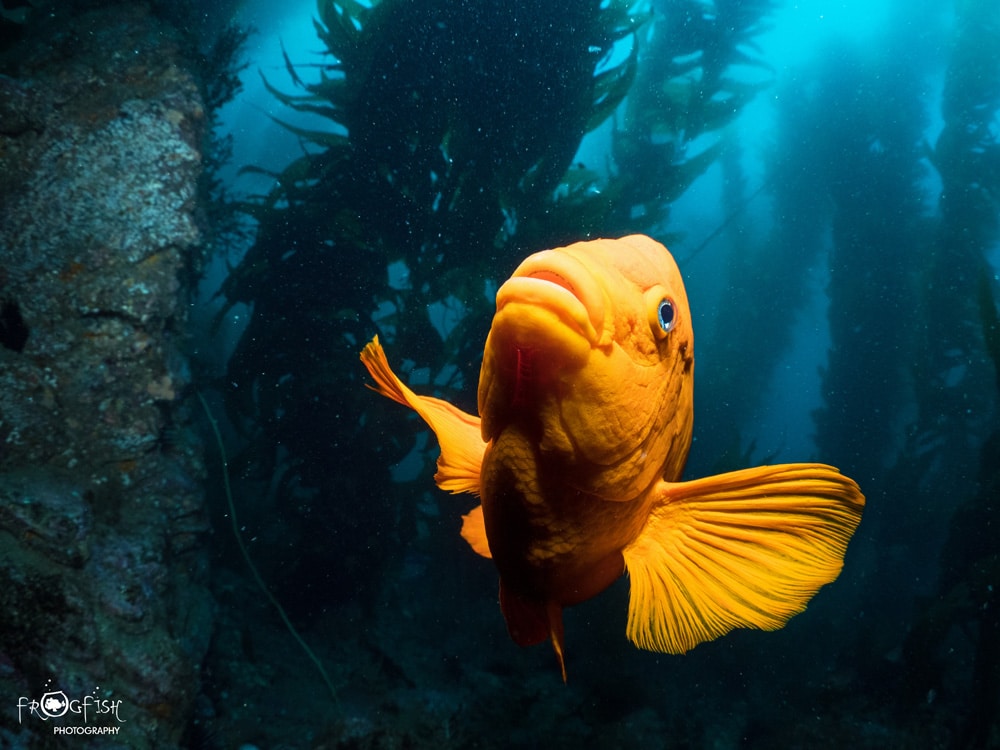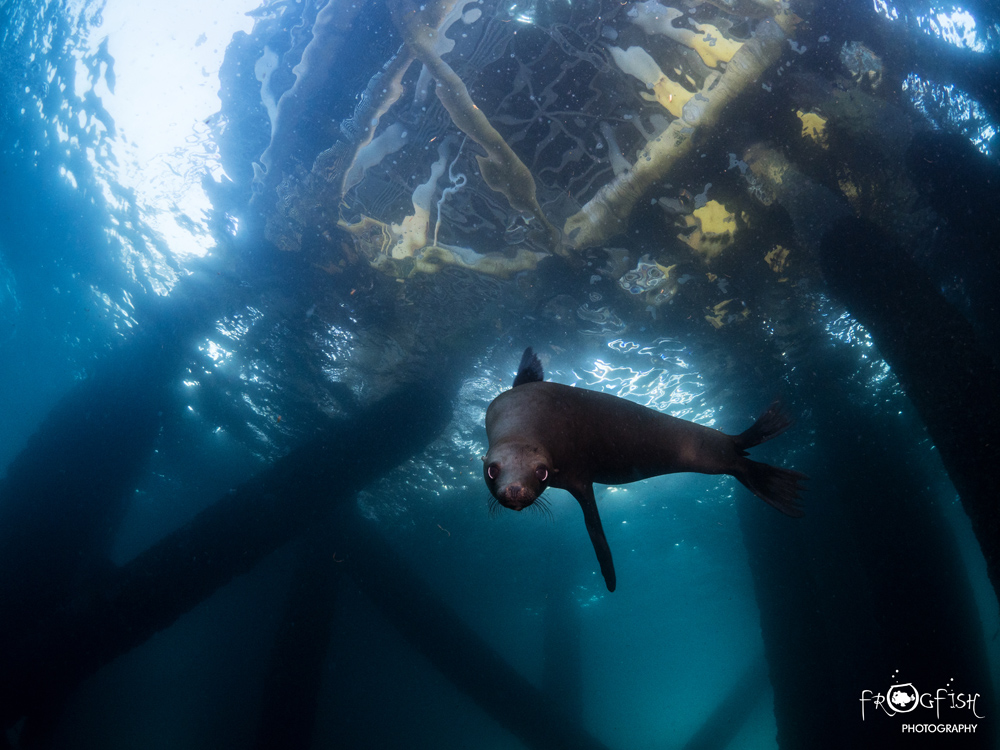News
Wining and Diving – California

The Wining and Diving series sees Nick and Caroline Robertson-Brown embark on a tour to tickle the taste buds as well as to discover amazing dive sites in wine-making regions around the world. Some of the best wines are influenced by sea breezes and a coastal climate, allowing two of Nick and Caroline’s passions to be combined into one epic journey.
**Please note, Nick and Caroline are not encouraging drinking before diving! The two activities are kept well apart on each of these trips.
California has over 1000 miles of coastline to explore and it also has over 1000 wineries so it is a perfect destination for Wining and Diving! It has always been a dream of ours to tour this rugged coast that makes for an epic road trip. Our trip, done over two separate visits, would take us from Fort Bragg in the north to San Diego in the south, along over 700 miles of one of the best coastal roads in the world. We flew into San Francisco, picked up a convertible Mustang, stuffed our diving and camera gear into every available space and headed north to start the wine tasting part of this trip.
Our first stop was to a vineyard whose wine we knew and loved already – Joseph Swan located in the Russian River Valley. They make a Zinfandel that could make you weep and so we wanted to visit the taste more of their wines that do not make it to the UK market. The drive through Russian River was worth the trip alone, with giant redwoods lining the winding road, sun shining, roof down, it was perfect. We also dropped into what must be one of the most eco-friendly vineyards in the world, Inman Family Wines. Organic and solar-powered, sustainability is key. Their Endless Crush Rose is a delight for a warm day on the terrace.
Whilst the sun was shining, the wind was also blowing and so our thoughts of diving in the north were put on hold. Instead, we visited glass beach in Fort Bragg, where over many years, glass tipped onto the beach has worn down to make smooth, multi-coloured, pebbles. A beautiful site, made from what was once rubbish dumped on the beach.
Further south, in Monterey, we reached the crossover point for our trip, as we moved away from wine tasting and into diving. We had one more vineyard we wanted to visit, again one we knew from drinking with friends in our back garden, Wrath Wines. They have tasting rooms in the delightful town of Carmel just a short drive from where we would be diving the next day. They wines are rich, full of flavour and their Pinot Noir is the best we have ever sampled.
Diving the Pacific Ocean in California has always been a dream, and so we had spent many happy hours on the internet researching the best dives and we made a list of the dives we wanted to fit in. Our first was Point Lobos in Carmel by the Sea. We were welcomed to this picturesque bay by a couple of Sea Otters floating on the surface, seemingly sunbathing. Our guide, Phil, had warned us that while the sea was flat calm, the winds had made visibility less than perfect. “You should have been here last week” he said, “when we had 20 feeding Humpback Whales by the boat at the end of the dive!” Our dive saw us swim through the giant kelp, explore anemone-covered boulders and be followed by a mischievous harbor seal. It was a pretty good start.
Heading further south we stopped in Ventura to do a day trip to Anacapa Island. A rugged volcanic island a couple of hours offshore. On the boat ride over to the island we saw whales, orcas and dolphins, as we skimmed across a flat calm ocean. On the dive we marvelled at the life covering every inch of the seabed and loved the bright orange Garibaldi fish who would face up to the camera as you approached.
We continued down to Long Beach, near Los Angeles, where we dived under a working oil rig, covered in marine life. We were joined by a playful young sea lion who zoomed around the small group of divers for over an hour. We also headed out to Catalina Island to dive the kelp forest and to look for the huge Black Sea Bass that the area is famous for. Diving in Giant Kelp is a wonderful experience akin to walking through a rain forest, the fronds towering above you and block out most of the sunlight in the denser patches, and letting dramatic cathedral light through making for a very atmospheric dive.
Our final stop was near San Diego, in the beautiful town of La Jolla. The coast here is home to a colony of sea lions that seem perfectly at ease sharing their home with locals and visitor alike. You can snorkel and dive here and we did both to enjoy these enigmatic creatures from both the surface and at depth. We also snorkeled with Leopard Sharks and turtles.
California offers the traveller so much. The coastal road is stunning, with forests lining one side and the vast ocean stretching out to the horizon on the other. The cities are vibrant with excellent nightlife; great food, drink and entertainment. The vineyards have some of the finest wines anywhere in the world and the diving offers some of the very best cold-water experiences we have had. Is there anything better than Wining and Diving in California?
Links
- For more information about Frogfish Photography click here.
- For information about visiting California click here.
Dive Centres
Sundiver International, Long Beach
Vineyards
Gear News
Introducing the TR-80, IR-50 and CS-30 Regulators from DYNAMICNORD

Whether you are a beginner or a professional diver – with the three new main regulators from DYNAMICNORD, everyone will find their favourite regulator. They all look super stylish.
Excellent performance with the TR-80
Quality and performance are the be-all and end-all for regulators. It is not for nothing that the TR stands for Tec Reg. The innovative design of the TR-80 guarantees absolute reliability – even in ice-cold waters.

Perfect breathing effort at 0.8 J/l / certified for diving in waters below 10 degrees / structural design made of solid brass for best cold protection / membrane-compensated design with dry seal of the first stage / reduced exhalation effort thanks to optimized exhalation membrane and bubble deflector / adjustable Venturi (dive/predive) and adjustment knob for individual inhalation comfort / innovative design of the front cover prevents free-flow in strong currents or when diving with scooters / design made of sandblasted brass, matt chrome finish / 2 HP and 4 LP outlets / mouthpiece made of high-quality, anti-allergic silicone for maximum comfort.


Amazing underwater adventures with the IR-50
The IR-50 is the top regulator for advanced and experienced divers. Natural breathing is the essence of this regulator.

Ideal breathing effort at 0.8 J/l /certified for diving in waters below 10 degrees / compensated membrane / adjustable venturi (dive/predive) and adjustment knob for individual inhalation comfort/ outlet valve and deflector for minimum exhalation effort and reduction of bubbles on the face / design made of sandblasted brass, matt chrome finish / 2 HP and 4 NP outlets / mouthpiece made of high-quality, anti-allergic silicone for maximum comfort.


The Workhorse – our CS-30
For diving centres and diving beginners – the workhorse stands for strong construction, reliability and robustness. Perfect for your training.

Optimal breathing effort at 0.8 J/l /recommended for diving in waters above 10 degrees / non-compensated piston / adjustable venturi (dive/predive) / outlet valve and deflector for minimum exhalation effort and reduction of bubbles on the face / design made of sandblasted brass, matt chrome finish / 1 HP and 3 NP outlets / mouthpiece made of high-quality, anti-allergic silicone for maximum comfort.


Octopus OP-30
The OP-30 is the ideal addition to all DYNAMICNORD regulators. It is identical in construction to the CS-30.

The TR-80, IR-50, CS-30 (DIN & INT) regulators and the Octopus OP-30 are available from DYNAMICNORD dealers and in the online store.
DYNAMICNORD – Your Outdoor Companion.
Marine Life & Conservation
Paul Watson Released as Denmark Blocks Japan’s Extradition Bid

Renowned anti-whaling activist Paul Watson has been released from custody in Greenland after spending five months in detention. Denmark’s Justice Ministry rejected Japan’s request for his extradition, citing insufficient guarantees that his time already served in custody would be credited against any potential sentence.
The 74-year-old Canadian-American was arrested on July 21 in Nuuk, Greenland’s capital, when his ship docked to refuel. His arrest was based on a 2012 Japanese warrant related to a 2010 encounter in Antarctic waters. Japan alleged Watson obstructed operations and caused damage to a whaling research ship during efforts to disrupt illegal whaling. Watson has consistently denied these claims, maintaining his commitment to marine conservation.
Denmark, which oversees extradition matters for Greenland, concluded that while the legal conditions for extradition were met, the lack of assurances from Japan regarding time-served credit made extradition untenable.
In a video shared by his foundation, Watson expressed gratitude and relief, saying, “After five months, it’s good to be out… and good to know they’re not sending me to Japan.” He added that the most difficult part of his time in custody was being separated from his two young sons.
Watson is a pioneering figure in marine conservation, known for founding the Captain Paul Watson Foundation in 2022 after decades of activism with the Sea Shepherd Conservation Society. His bold efforts to defend marine life have earned him widespread support, including from celebrities and conservationists. His work has also been featured in the acclaimed reality TV series Whale Wars.
Watson’s lawyer, Jonas Christoffersen, praised the decision, stating, “We are happy and relieved that Paul Watson is now free.” He added that Watson is eager to reunite with his family and continue his vital work.
The arrest occurred while Watson’s vessel, the M/Y John Paul DeJoria, was en route to the North Pacific with a team of 26 volunteers to intercept a Japanese whaling ship. His foundation described the arrest as politically motivated and emphasized that Watson’s actions were focused on ending illegal whaling practices.
Japan resumed commercial whaling in 2019 after leaving the International Whaling Commission, asserting that whale meat is a cultural tradition. Conservationists, however, continue to challenge these practices, highlighting their impact on marine ecosystems.
Despite the challenges, Watson remains steadfast in his mission to protect marine life and bring attention to whaling practices. His dedication to ocean conservation has made him a globally respected advocate for the environment.
-

 News2 months ago
News2 months agoIconic SS United States to become the World’s Largest Artificial Reef
-

 News3 months ago
News3 months agoBook Review – 52 Assignments: Underwater Photography
-

 Gear News3 months ago
Gear News3 months agoDYNAMICNORD – New German diving brand enters the British market
-

 News3 months ago
News3 months agoExploring Cenote El Pit: A Diver’s Dream
-

 Gear News3 months ago
Gear News3 months agoTry BARE drysuits (and maybe even win one!) this Friday with Sea & Sea at North West Dive Fest
-

 Marine Life & Conservation3 months ago
Marine Life & Conservation3 months agoBook Review: Coral Triangle Cameos
-

 Blogs2 months ago
Blogs2 months agoDive the Egyptian Red Sea this Autumn with Regaldive
-

 News3 months ago
News3 months ago2024 Ocean Art Underwater Photo Competition Announced























